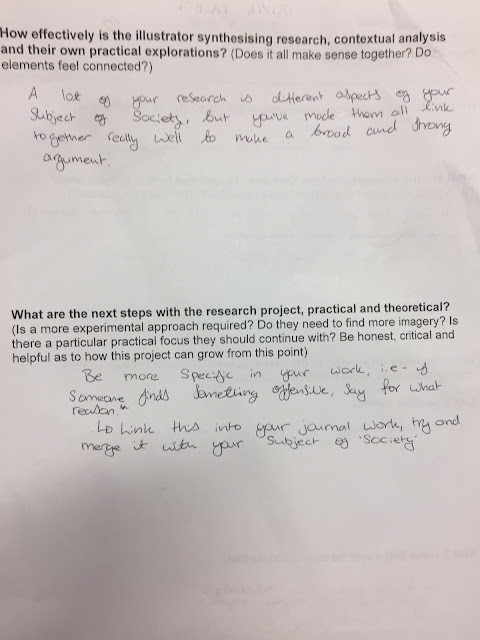11th January Wednesday 2017
Consumerism: persuasion, society, brand, culture
-Adam Curtis- filmaker- the century of the self
- No logo- Naomi Klein
- Sigmund Freud 1856-1939:
- new theory of human nature
- physcoanalysis
- hidden primitive sexual forces and animal instincts which need controlling
- The interpretation of dreams (1899)
- The unconscious (1915)
- The ego and the id (1923)
- Beyond the pleasure principle (1920)
- Civilisation and its discontents (1930)
- desire for sexual gratification, instant gratification, doesn't gel well with civil society
- Frued argued that we are constantly pressed by society as its incompatible with human instinct
- pleasure principle- if we believe were doing stuff we enjoy, were pacified
- TIP OF THE ICEBERG DIAGRAM
- ego- conscience sense of self
- id- primal, childlike, driving force
Edward Bernays 1891-1995:
- press agent
- employed by public information during WW1
- Propaganda
- Post war- set up ‘the council on public relations’
- birth of PR
- based on the ideas of Freud, his uncle
- Crystallising public opinion (1923)
- Propaganda (1923)
- PR- organised public opinion/ advertising fused
- persuades people to believe a certain thing
- ‘Torches of Freedom’ cigarette companies: women seen as unladylike to smoke, so women weren't buying cigarettes. he was employed by cigarette companies to break the taboo.
- Easter day parade 1929- hired glamorous actresses to dress up like high class debutantes in the parade, then in full view of everyone they would all light up a cigarette and start smoking it. He tipped of newspapers so it got a lot of press, he told the news it was a political protest from suffragettes
- “They’re not smoking, they're lighting torches of freedom” symbolic act of feminism
- product placement
- celebrity endorsements
- the use of pseudo- scientific reports
- 1924- worked for Coolidge to release a jazz track by a famous musician to make Coolidge seem cool
- all of theses tactics are attempts to attach desirable qualities to things that weren't desirable before
- all of the desires that society doesn't allow us to realise, can be realised through buying into a product or acting a certain way
Fordism:
- Henry Ford (1863-1947)
- transpose taylorism to car factories of Detroit
- the production line
- moving assembly line
- in 17 years society becomes saturated with too many things being produced and people think they have enough stuff, they don't want to buy things anymore
- BRANDING now becomes really important
- Companies need to distinguish their products from others on the market, they need to stand out
- gave their products peoples names to make them seem more handmade and authentic e.g. Aunt Jemimas, or Hartleys jam
- Bernays sold cars under the guise of improving male virility- a man in charge
- sometimes works on the idea of envy, think of the lifestyle you could have with this certain product
- the desire to be loved, be successful, be popular
- if you can attach an idea of creativity to something, you can make it more popular, the desire to be more creative and authentic than others
Shift from a need culture to a desire culture:
- We don't need these new clothes or perfumes, we just desire them
- we start to see ourselves and our identities made up by our possessions
- THE HIDDEN PERSUADERS- VANCE PACKARD- 1957
- Marketing hidden needs: selling emotional security, reassurance of worth, ego-gratification, creative outlets, love objects, sense of power, sense of roots, immortality
- e.g. fridge freezers= not just keeping food cold, also providing for your family, never going hungry
- ego- the person you think you are or want to be, ‘buy this and you can really be this person’
1920- The new elite is needed to manage the bewildered herd- Walter Lippmann
- You can create a social system out of this which will be harmonious, a group of people working beyond government to keep people working together
- in promising to meet our desires through products, we are plicated to feel like were happy, we believe that were free and happy where in reality this is questionable
- in the West, we haven't all mounted together and started a revolution, or gone against any regimes, were just passive and ‘happy’
- maybe this is a social system that has been implemented to keep us from thinking about social change and other valuable things and keep our minds on short term gratification through products
October 24, 1929, Black Tuesday, The Great Depression
- Roosevelt came into power
- New Deal 1933-36
- instead of backing big business, taxed people more, put restraints on the market
- reinvest money on infrastructure, housing projects
- markets didn't like the idea of being restrained, so they clubbed together, and tried to get Roosevelt out of power
- New Yorks World Fair, an advert for consumerism as the best way of life, businesses providing you with the answers to life and happiness
- all new gadgets at world fair
- organised by Bernays
- DEMOCRACITY
- proposes that you give people the belief that they're free, but really they're not
Conclusion:
- consumerism is an ideological project
- we believe that through consumption our desires can be met
- it can be a way of organising society
- The Consumer SelF
- YOU ARE NOT WHAT YOU OWN
- the legacy of Bernays and PR can be felt in all aspects of our society today
- the conflicts between alternative models of social organisation continues to this day
- to what extent are our lives ‘free’ under the western consumerism society?
- conforming to whats in the shops: trends, advertising, new gadgets




